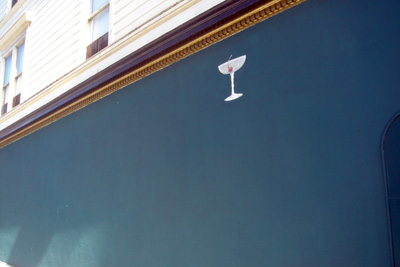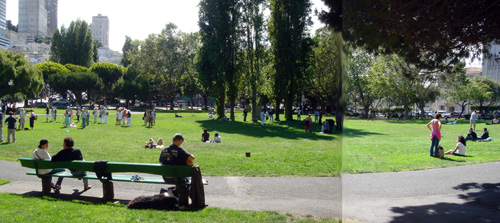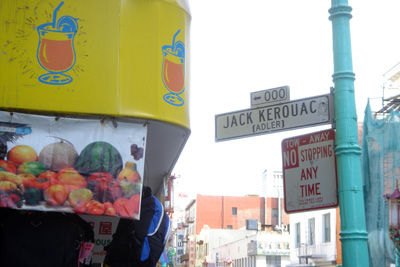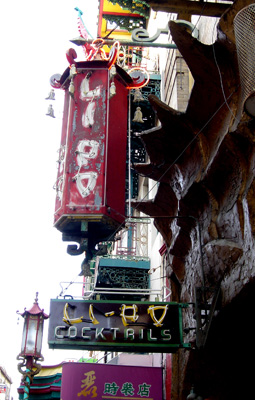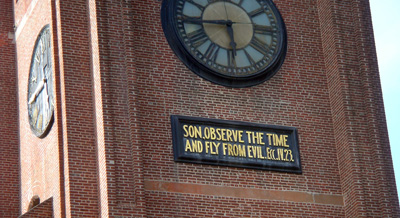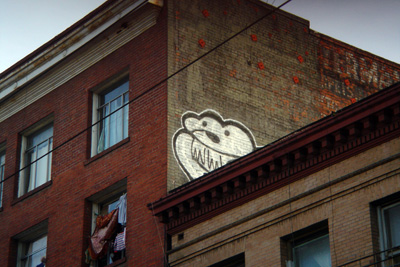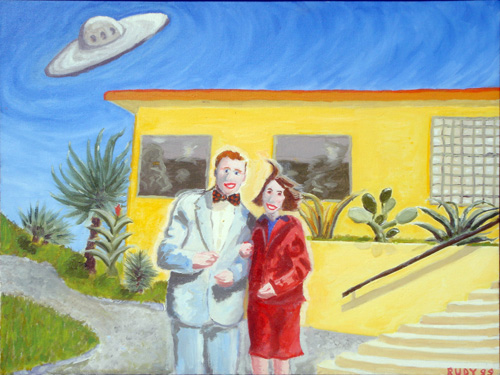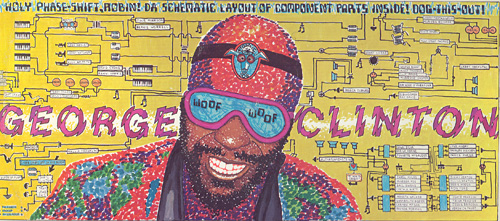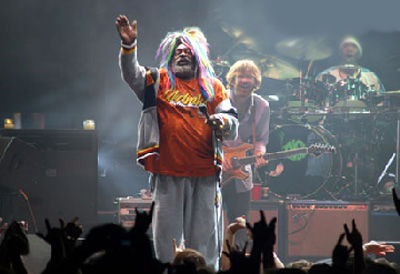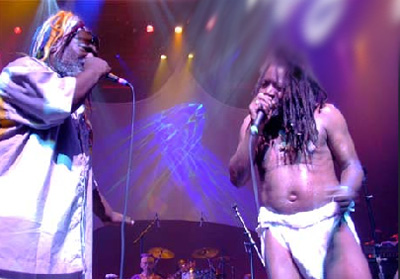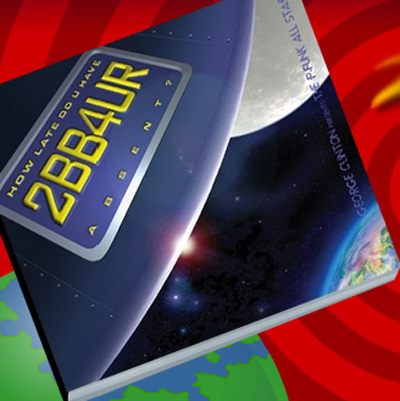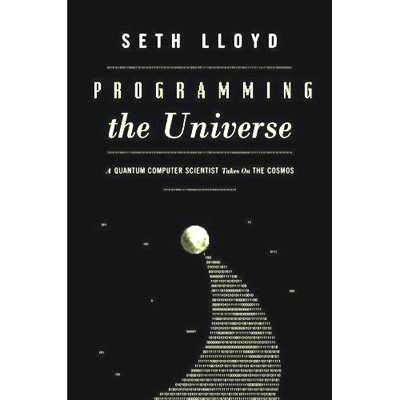
Here’s my review of Seth Lloyd, Programming the Universe: A Quantum Computer Scientist Takes On the Cosmos (Knopf, 2006). In most of this review I'll be grappling with certain debatable issues, but let me say out front that I really liked this book. It's amazingly readable, given the heavy subject matter. Lloyd has a light, deft touch, and he tells good jokes in passing. One has a sense of a lively, humane intelligence working throughout. Highly recommended.
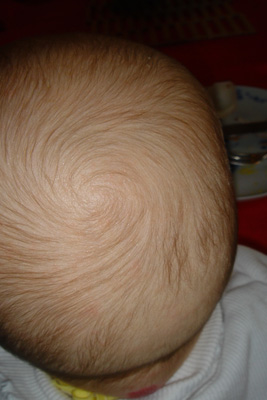
Seth Lloyd is a 46 year old professor at MIT, specializing in quantum computation and quantum information theory. He’s best-known to the public for two articles in the Scientific American about quantum computing, most recently, “Black Hole Computers” in November 2004, co-written with Y. J. Ng. See also his more technical “Computational Capacity of the Universe,” online. More links: Kevin Kelly interviews Lloyd in the March, 2006, Wired; and a review of Lloyd's book in the New York Times.
He starts the new book, Programming the Universe, like this: “The universe is a quantum computer. … What does the universe compute? It computes itself.” [p. 3]
Rather than thinking in terms of matter holding information in terms of impossible-to-precisely-measure analog numbers like position or velocity, Lloyd suggests we think in terms of crisp quantum values that atoms can have; like “spin up vs. spin down” or “ground state vs. excited to discrete level so-and-so.” In this view, each particle in a physical system codes a few bits, and when the particles interact, we get a logical operation between the bits. Whenever particles bump each other, its in effect a quantum logic gate.
He has some good material about superposed states; the weird thing about quantum information is that a quantum bit or qubit can be in a superposed stated of partly 0 and partly 1.
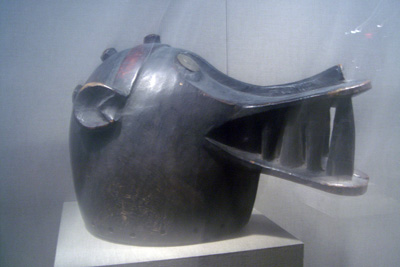
Lloyd keeps his eye on the universe though. He suggests there is only one possible state for the start of the universe; it starts out with no bits of info at all. And the universe computes itself from there. Why, he wants to know, is the universe relatively complex looking without being boringly orderly (too cold) or totally random (too hot)?
Lloyd draws on the analogy of monkeys who are pounding away not on typewriters, but on keyboards that input code to a computer. The laws of nature are the computer. And the monkeys are inputting possible programs. Now, as it happens, lots of short programs generate nice-looking complex patterns. These are what Wolfram calls the Class 4 computations; the ones that I call gnarly computations. Water, fire, clouds, trees, these are all examples of natural computations that, given any of a wide range of inputs, will generate much the same kinds of patterns.
In Lloyd’s words, “Many beautiful and intricate mathematical patterns — regular geometric shapes, fractal patterns, the laws of quantum mechanics, elementary particles, the laws of chemistry — can be produced by short computer programs. Believe it or not a [programming] monkey has a good shot at producing everything we see.” [p. 184]
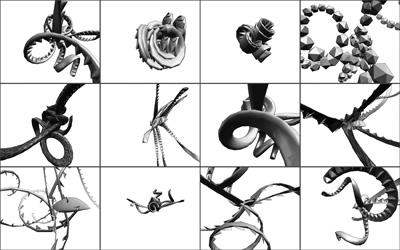
Lloyd has a nice description of Chaitin’s algorithmic complexity and Bennett’s logical depth, something I wrote about myself in Mind Tools. Bennett is amazing, he’s come up with so many important ideas, and Chaitin’s no slouch either. Lloyd uses Charles Bennett’s term “algorithmically probable” to refer to patterns that have a short program, and thus a high likelihood of resulting from randomly picked little programs.
He then says, “For the computational explanation of complexity to work, two ingredients are necessary: (a) a computer, and (b) monkeys. The laws of quantum mechanics themselves provide our computer.” [p. 185]
Actually, as I have doubts about quantum mechanics, I’d say that maybe we can just say the “laws of logic,” rather than “laws of quantum mechanics.”
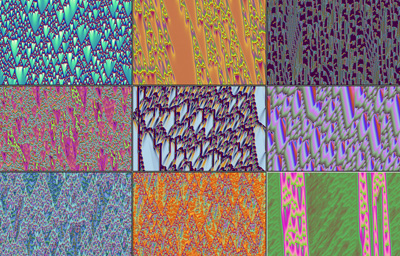
The really debatable issue is what the monkeys are.
Stephen Wolfram would argue that the universe is ultimately deterministic; think of his beloved cone-shell type cellular automaton rule 30, which starts with a single bit, and spews out endlessly many rows of random-looking scuzz. So the random-looking seeds that feed into the universe’s computation aren’t in fact really random, they’re pseudorandom sequences generated by a lower level randomizing computation. In this view, there is only one possible universe.
I want to say, “Mektoub. It is written,” but that’s not quite accurate, as that phrase suggests that some divinity wrote out the history of the universe before it happened. It’s more that “It is programmed.” The underlying pseudorandomizer is a deterministic rule like CA Rule 30, and it feeds inputs into the universal computer that then generates the complex lovely patterns of the world.
Now, Lloyd, being a quantum mechanic, prefers to say that the “monkeys” are quantum fluctuations. One of the problems in this view is that it we aren’t philosophically satisfied with the notion of completely random physical events. We like to see a reason. The way quantum mechanics gets out of this is to say that since there’s no reason for a particular turn of events, it must be that all possible turns of events happen.
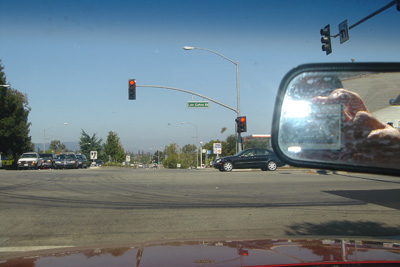
This is the multiversal view. Since there’s no reason that, say, bit 0 rather than bit 1 should pop up as the fluctuation found at a given instant, Lloyd would suppose that there are two universes, with 0 on the one hand and 1 on the other hand. Unlike David Deutsch, however, Lloyd isn’t interested in pushing the alternate universes as being truly real.
Lloyd sidesteps a move that I find intellectually unsatisfying. That is, he avoids falling back on the anthropic principle. If you suppose that all possible universe exist, then the question arises: why do we happen to be in a universe where everything is just right for humans to have come into existence? The anthropic principle says, well, the world is the way it is because if it weren’t, then we wouldn’t be here.
Lloyd seems to say, rather, that planets and trees and people are algorithmically probable. Things like us are fairly likely to occur in any gnarly class four computation, and all the universes, being universal computations, are potentially gnarly, and in fact a large number of random seed will produce gnarly.

But, being a quantum mechanic, Lloyd doesn’t give enough consideration to the ability of deterministic computations to generate what Wolfram calls “intrinsic randomness,” indeed, on p. 50 he writes, “Without the laws of quantum mechanics, the universe would still be featureless and bare.” That’s not true. If you look, for instance, at any computer simulation of a physical system, you see gnarly, but these simulations don’t in fact use quantum mechanics as a randomizer. They simply use deterministic pseudorandomizers to get their “monkey” variations to feed into the simulated physics. We really don’t need true randomness. Pseudorandomness, that is, unpredictable computation, is enough. There’s no absolute necessity to rush headlong into quantum mechanics.
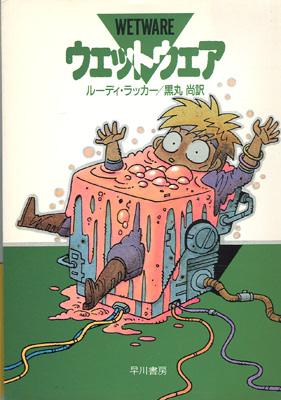
Still on the debate between classical and quantum realities, Lloyd argues that the physical world can’t be well-simulated on digital classical computers because if you take a quantum system, then the system’s variables are generally in superposed states, so that if you have a system of, say, 300 atoms, and each atom’s spin is a qubit (quantum bit) that’s a superposed mixture of up and down, then to properly simulate what happens digitally, you really need to simulate all possible 2^300 pure states that the system could be in, and this is an impractically large number.
Therefore, says Lloyd, digital classical computers can’t simulate physics.
We could of course turn the argument around and say that if we believe that the universe results from a digital classical computation, then it must be that quantum mechanics is mistaken in thinking that systems really are in superposed states, for otherwise there would be too much work for the real ongoing digital classical cosmic computation which we can “plainly see” is happening all around us without slowing down.
In other words, I feel that Lloyd points out an inconsistency between the two beliefs, but he hasn’t proved that his version is correct.
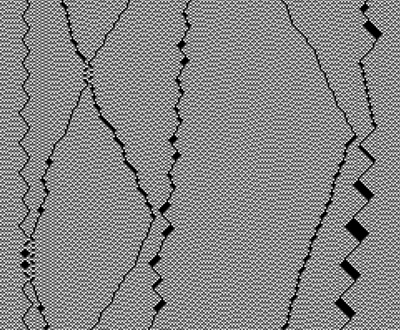
This said, it’s nice to read about how nicely quantum computers can simulate physical systems. And I’m tempted to lighten up and let the quantum in to my heart. I’ll be doing that provisionally in any case in Postsingular which uses quantum computers. There’s no market in being a reactionary sorehead after all.
Coming back to Lloyd’s main point, the idea is “In the computational universe … the innate information-processing power of the universe systematically gives rise to all possible types of order, simple and complex.” Here, again, I’d stress that there’s no need for quantum computation per se to reach this conclusion. Because the laws of nature are a class 4 or gnarly computation they necessarily generate interesting structures that lie at the interface between on the one hand the Charybdis of predictable repetition and, on the other hand, the Scylla of random uninteresting scuzz.
By the way, I seem to recall that Charybdis was the sullen ocean-swallowing personification of a whirlpool near the Straits of Gibraltar and Scylla was the many-headed snapping personification of a shoal of sharp rocks near the whirlpool.
Charybdis, in that she pulls her inputs always to a single drowned point at the center of a vortex, is a good image of “too cold” computations that squeeze you down to constancy or periodicity. Scylla, in her savage punching-holes-in-the-hull aspect, is a good image of a “too hot” computation that tears everything to shreds.
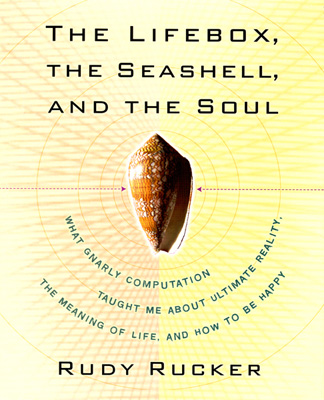
Lloyd suggests what looks like a promising method for deriving general relativity from a quantum computational view of the reality. But perhaps its not so different form Wolfram’s more classical notion of reality as a network rewriting system that produces curved space itself.
[On p. 202, he makes a nice point, that is, since catalytic chemical reactions can carry out COPY, NOT and AND operations, we know that chemistry is computation universal. I wish I’d thought of saying that in my Lifebox tome!]
Bottom line: the universe computes itself, and there’s nothing particularly surprising about the level of complexity that we find around us, as this is typical for computations.
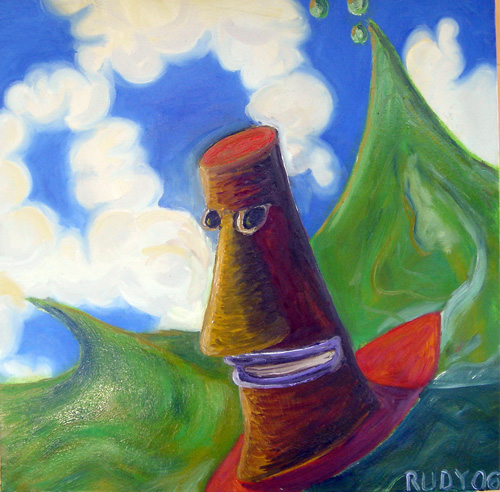
I’m science-fictionally intrigued with the idea of the big computation making up a kind of mind, and Lloyd also speaks to this: “Some of that information processing, like digital computation can resemble thought. But the vast majority of the information processing in the universe lies in the collision of atoms, in the slight motions of matter and light. Compared with what is normally called thought, such universal ‘thoughts’ are humble: they consist of elementary particles just minding their own business.” [p. 211]
But in Postsingular I’m gonna find a way to wake objects up…
